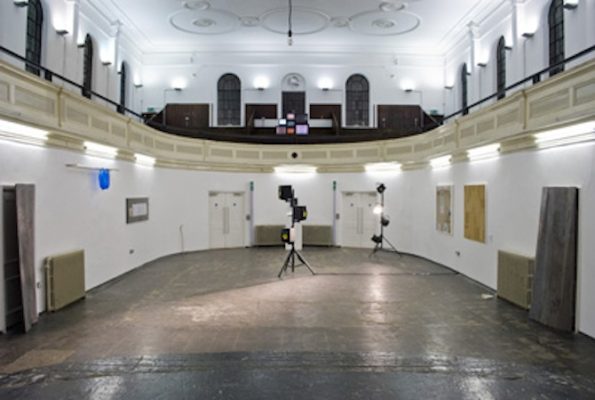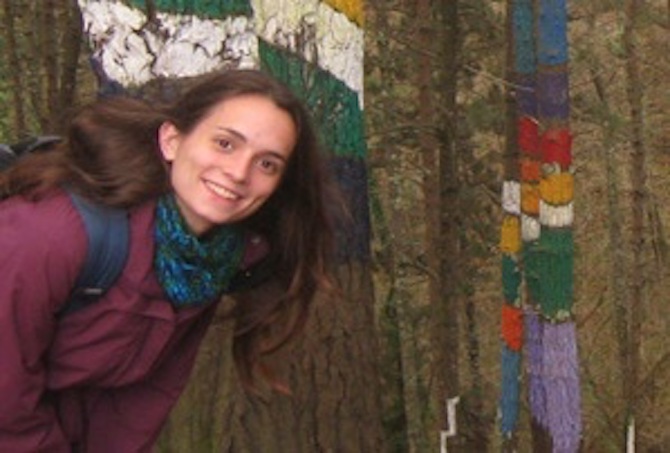Search
To search for an exact match, type the word or phrase you want in quotation marks.
A*DESK has been offering since 2002 contents about criticism and contemporary art. A*DESK has become consolidated thanks to all those who have believed in the project, all those who have followed us, debating, participating and collaborating. Many people have collaborated with A*DESK, and continue to do so. Their efforts, knowledge and belief in the project are what make it grow internationally. At A*DESK we have also generated work for over one hundred professionals in culture, from small collaborations with reviews and classes, to more prolonged and intense collaborations.
At A*DESK we believe in the need for free and universal access to culture and knowledge. We want to carry on being independent, remaining open to more ideas and opinions. If you believe in A*DESK, we need your backing to be able to continue. You can now participate in the project by supporting it. You can choose how much you want to contribute to the project.
You can decide how much you want to bring to the project.

Would anyone dare to entrust their prestigious collection of contemporary art to a group of university students? The answer is yes. At the hands of Matreyi Maheshwari, the curator responsible for the programme of activities at the Zabludowicz Collection in London , it’s been five years now since the gallery has worked with Goldsmiths, The Royal College of Art and Chelsea College of Art to exhibit thsi joint project. Testing Ground. This joint project brings together a group of young students from different masters in curating, who work for three months under the guidance of the curatorial team of the gallery, creating all the aspects of an exhibition.
This year, explains Matreyi Maheshwari, they have opted to consolidate Testing Ground within the gallery’s programme. The number of participants has been reduced from thirty to ten; the length of the exhibition has been extended to two weeks and the whole gallery space has been granted to the students. In return, just one condition: the exhibition must be unitary. Ten young curators have to fuse their ideas into one.
Having recently arrived in London, I decided to participate in the project after the presentation by Maitreyi Maheshwari. In the selection of the candidates, some common interests were identified: getting to know the collection, working in a collaborative project and experimenting with the participation of the public. After a first exploration of the space, the group began to outline an area of significance: concepts such as illusion, perception and experience ended up being stimulating for everybody. The word that initially sustained this semantic field was prestidigitation.
We were facilitated with a document of some three hundred pages, around 1800 works, all with a brief description and a discrete photograph. How to understand this infinite collection? Our only option was to select intuitively artists and titles that seemed to hint at our still amorphous concept. A few weeks later, we handed Maitreyi a list of the chosen works. It wasn’t a theoretical investigation of the concept that made the selection possible, so much as the sum of each of our intuitions that materialised in a series of never ending discussions. These debates and the fact that they produced endless changes ended up being an exhausting, but productive, process.
The other major difficulty has been to generate a clear language and discourse. The first texts were pretentious and the concepts appeared confused. Finally we found a way of clarifying the discourse; we substituted the word prestidigitation for the gesture of the magician, for “sleight of hand”. The relationship with our mentor, Maitreyi, ended up being crucial for the successful completion of the project. As the person in charge, she orchestrated the group with patience, energy and high expectations.
We decided to go beyond the collection and present artists from outside it but whose practice was related to our concept. We selected some recent works and proposed to some artists that they create a piece for the space. It has been an excellent opportunity to establish a quality dialogue with artists like Oliver Lee Terry, Nicole Bachmann, Andrej Bako, g.bridle, Luuk Schröder and Lindsay Seers.
The exhibition Disappearing Into One revolves around the instant of the magic trick, the moment in which levels of reality are superimposed; we wanted to establish a dialogue between pieces that questioned the perception of the real, be it through language (Nicole Bachmann, Damien Roach), space (Erin Schirreff, Andrej Bako), visuals (Edgar Leciejewski, Ryan Gander) or installations (Oliver Lee Terry, Laura Buckley).
To generate an unsettling atmosphere, we altered the pathway of the visitor: first one goes up an icy staircase, until one reaches a wooden balcony (previously the choir-stalls of the Methodist church) and where now there are just three pieces. From there one can see other pieces on the lower level. The visitor in the first space finds seven televisions, each with a colour progression that shows the central pixel of the films; a steel and aluminium sculpture with interactive electric sound; imperceptible reflections from the large windows, transparent reflections on the walls.
Before beginning the course I asked myself if the university could teach me anything about this profession that went beyond theory that would offer practical tools. Two years later during my Erasmus exchange in Dresden (Germany), I had the opportunity of taking several courses related to museums in the city. During one of them, we discussed with Ulrich Bischoff, director of the Albertinum museum, the temporary exhibition Das Vesprochene Land-The Promised Land. It was extraordinary: the director of the museum, truly passionate about his collection, spent two weeks with us in the exhibition and each student had to write some kind of piece, and only afterwards situate it within the context of the artist. It was a real pleasure, an authentic learning process.
Returning to Barcelona on the other hand I found a lack of any similar proposals. It’s true that there are open calls for young curators, such as BCN Producció or Caja Madrid. However, the dialogue between academic centres of arts and humanities and institutions, museums or galleries is not active. One of the most interesting aspects of Goldsmiths is that it constantly receives proposals for students: calls for internships, proposals for articles, workshops, conferences, etc. The master’s course, beyond being a space for theoretical training and experimentation, maintains a lively and stimulating relationship with the outside world.
The example of Dresden indicates that it is possible to improve relations between education centres and museums, even in small cities. In this sense, the aim of Testing Ground is notably commendable for providing an outlet for young curators and artists. Elizabeth Neilson and Ellen Mara De Wachter, members of the team at the Zabludowicz Gallery and who studied for their masters at Goldsmiths and RCA, made the observation that there was a lack of platforms for work experience and exchange and so the gallery decided to launch their own.
Projects like this seem extremely necessary to me. Universities are full of trained students, eager to explore practice and theory in more depth: why not trust their talent, our talent, and help them develop projects? In the face of such an unfavourable situation, shouldn’t we activate dialogue through our capacity for criticism and self-reflection?


One day she will analyse the endogamies and hierchical structures within the artistic cultural network. She likes precision and is working on improving her synthesis skills. Through collaboration with the sound art collective Call & Response Helena engages and sharpens her communicative skills.
"A desk is a dangerous place from which to watch the world" (John Le Carré)